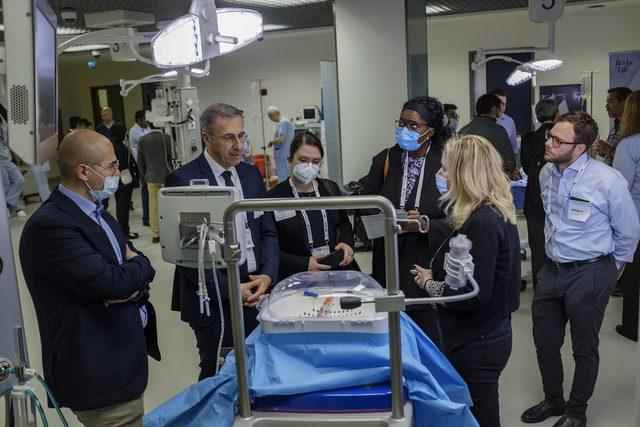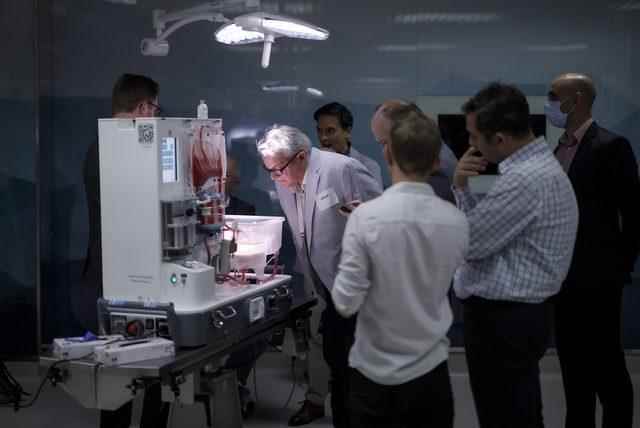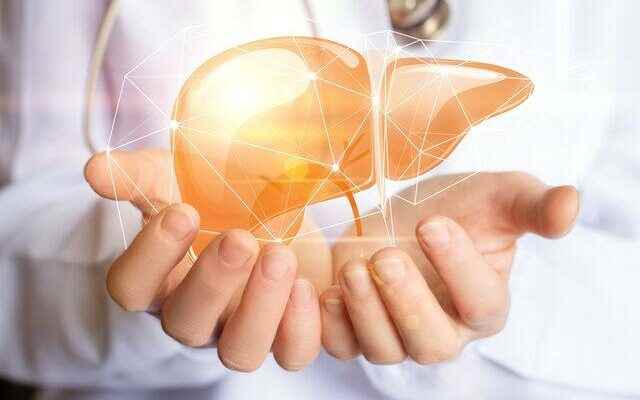The only method that allows end-stage liver patients to hold on to life; transplantation. However, the lack of adequate donations erodes patients’ hopes. As such, the scientific world is trying to discover new methods that will increase the success of organ transplantation. The ‘machine perfusion’ workshop, which was held for the first time in our country, is one of them. This new method offers experts 3 important possibilities to increase the success of transplantation of donated liver from cadaver. Thus, there is new hope for patients, both in the decision of transplantation and after the transplantation, by increasing the compliance rate of the liver with the patient.
GREAT EXCITEMENT IN THE WORLD OF MEDICINE
In the past days, the world’s leading experts came together at the World Liver Transplant Congress and discussed the issue of ‘liver transplantation’ from all aspects. prof. Dr. In the congress chaired by Yaman Tokat, the latest developments in the world were conveyed, as well as the comprehensive scientific program created by physicians experienced in liver transplantation. One of the most striking methods in the congress, which brought together important names in liver transplantation from Turkey and many countries of the world, was the ‘machine perfusion’ method!

The fact that the ‘machine perfusion’ method, which is applied especially in the USA and some European countries today, significantly increases the success in liver transplants from cadavers, thanks to the benefits of the method, creates great excitement in the medical world!
LIVER TRANSPLANT FROM CADAVER
In the congress, where many scientific subjects were conveyed, the ‘machine perfusion’ method, which is one of the giant steps taken in the medical world to solve the problems in liver transplantation, was also introduced. The ‘machine perfusion’ method was applied live in the workshop program held at the Clinical Simulation and Advanced Endoscopic – Robotic Surgery Training Center (CASE), one of the 3 largest centers in the world and within the body of Acıbadem University. In the workshop followed by the world’s leading experts, the liver taken from a cadaver was processed in ‘machine perfusion’ and made transplantable. This workshop was successfully held together with the University of Toronto team from Canada and the Harvard University team from the USA.

CAN BE USED SAFELY IN PATIENTS
Professor at the University of Toronto. Dr. Markus Selzner, stating that the ‘machine perfusion’ method, which has created great excitement in the medical world, provides a test drive for the liver, said, “We can only reject grafts in organ transplantation for numerical or historical reasons. However, the functions of grafts can be much better than we think. This method allows us to do a test drive of the liver outside the body before transplantation from a cadaver. Thanks to the machine perfusion method, we can see that many livers are not as bad as we thought, and we can use them safely in patients.

3 VITAL BENEFITS IN TRANSPORT
prof. Dr. Yaman Tokat pointed out that they expect a 20-25 percent increase in the number of cadaveric transplants when the machine perfusion method, which has not yet been applied in our country, is used, and said, “The most important feature of this method is that it allows us to distinguish whether the organs will benefit or harm the patient. In other words, it gives us the opportunity to know whether the organs will work or not before they are transplanted into the body. Thanks to the method, we will now be able to transplant many organs that we do not use because we think that it does not benefit the patient. Thus, after the transplantation, we will know the answers to many questions that arise in our mind before using this method on the compatibility of the liver with the patient.

Today, liver donated from a cadaver needs to be transplanted quickly to the patient. The prolongation of the time until the transplant in the liver, which is kept in cold storage, causes the liver to lose its functions. prof. Dr. Yaman Tokat pointed out that in this method, even if time passes, there is no problem in the functions of the donated liver, in other words, it can be preserved, adding, “In addition, evaluating the graft quality of the liver before the transplantation and extending the life of the liver by making it stronger is another important feature of this method. Scientific research also reveals that livers, which were previously rejected for organ transplantation, can be used successfully thanks to this method.
